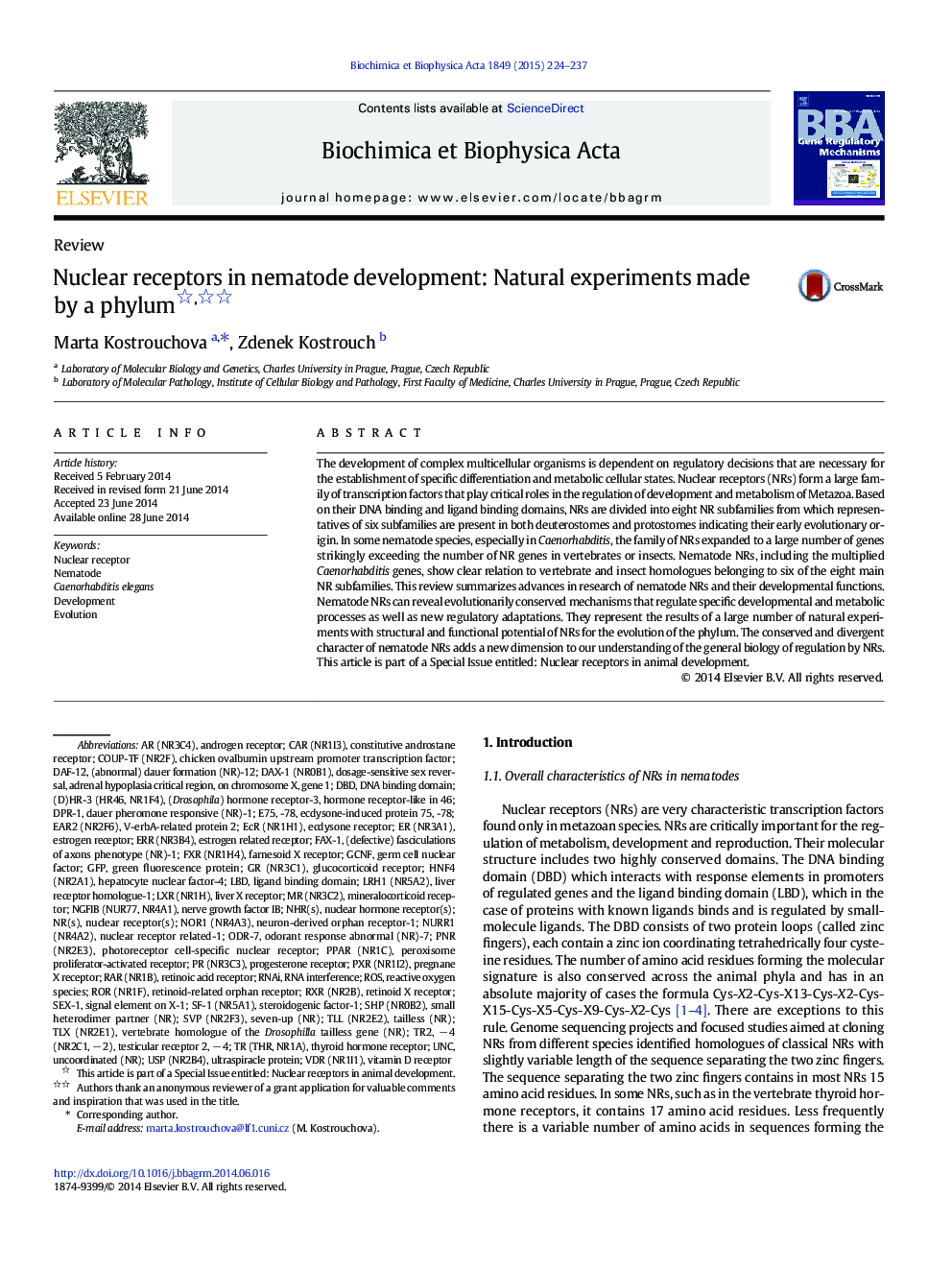| Article ID | Journal | Published Year | Pages | File Type |
|---|---|---|---|---|
| 10799076 | Biochimica et Biophysica Acta (BBA) - Gene Regulatory Mechanisms | 2015 | 14 Pages |
Abstract
The development of complex multicellular organisms is dependent on regulatory decisions that are necessary for the establishment of specific differentiation and metabolic cellular states. Nuclear receptors (NRs) form a large family of transcription factors that play critical roles in the regulation of development and metabolism of Metazoa. Based on their DNA binding and ligand binding domains, NRs are divided into eight NR subfamilies from which representatives of six subfamilies are present in both deuterostomes and protostomes indicating their early evolutionary origin. In some nematode species, especially in Caenorhabditis, the family of NRs expanded to a large number of genes strikingly exceeding the number of NR genes in vertebrates or insects. Nematode NRs, including the multiplied Caenorhabditis genes, show clear relation to vertebrate and insect homologues belonging to six of the eight main NR subfamilies. This review summarizes advances in research of nematode NRs and their developmental functions. Nematode NRs can reveal evolutionarily conserved mechanisms that regulate specific developmental and metabolic processes as well as new regulatory adaptations. They represent the results of a large number of natural experiments with structural and functional potential of NRs for the evolution of the phylum. The conserved and divergent character of nematode NRs adds a new dimension to our understanding of the general biology of regulation by NRs. This article is part of a Special Issue entitled: Nuclear receptors in animal development.
Keywords
GCNFRetinoid X receptorUncGFPNeuron-derived orphan receptor-1LBDDBDUltraspiracle proteinDAF-12retinoid-related orphan receptorhepatocyte nuclear factor-4farnesoid X receptorRNA interferenceRNAiROSDNA binding domainligand binding domainDevelopmentSteroidogenic factor-1chicken ovalbumin upstream promoter transcription factorgerm cell nuclear factorEvolutionliver receptor homologue-1Green fluorescence proteinliver X receptorCaenorhabditis elegansNematodeReactive oxygen speciesconstitutive androstane receptorAndrogen ReceptorEstrogen receptorRetinoic acid receptorEcdysone receptorperoxisome proliferator-activated receptorEstrogen related receptorMineralocorticoid receptorthyroid hormone receptorVitamin D receptorProgesterone receptorPregnane X receptorglucocorticoid receptorNuclear receptor
Related Topics
Life Sciences
Biochemistry, Genetics and Molecular Biology
Biochemistry
Authors
Marta Kostrouchova, Zdenek Kostrouch,
